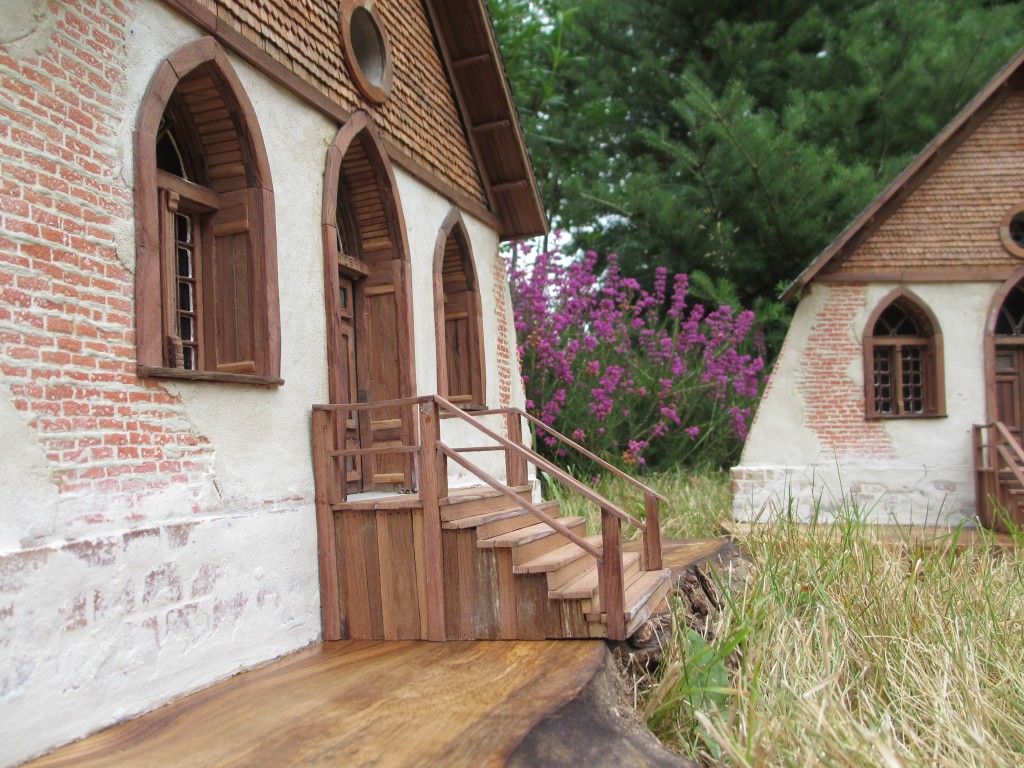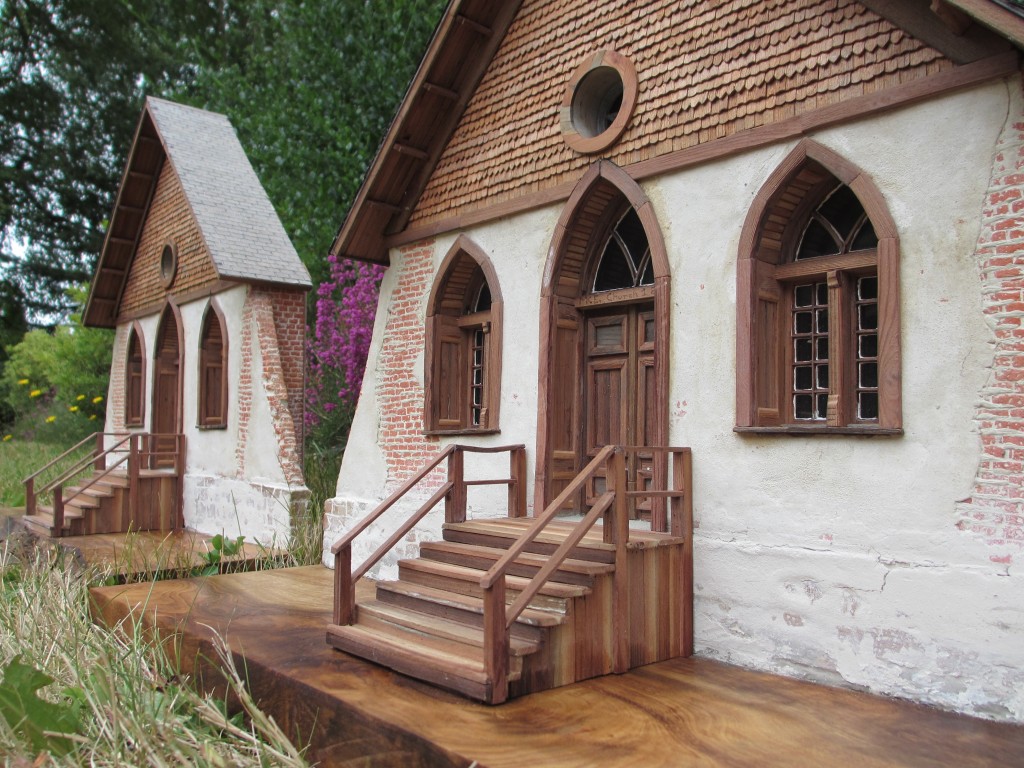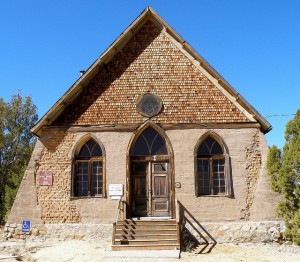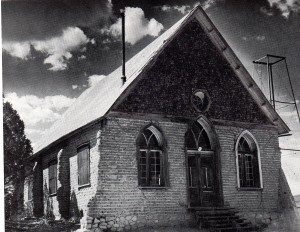I was first inspired by the Hearst church while Reading Lambert Florin’s 1969 book “ Historic Western churches” I could imagine that a place named Pinos Altos would certainly be the kind of place I would want to be living back in 1898 or even now. Even with the lush forest resources, builders of the church were limited with local local supplies which were being consumed rapidly by all the work in the mines. Adobe would prove to be the more available material to construct the walls. The pine that was used to fabricate the windows, doors and trim on this building was certainly used masterfully. The craftsmen molded the knotty wood and created a simple and elegant design. It was challenging to recreate the gable end shakes with their alternating pointed, concave, and convex exposed ends. Although I used the tightest grained wood I had available, I was not able to find wood with enough very tiny knots to match the very knotty pine of the real church. I am still pleased with the outcome.
Besides being a wonderful historic building in a quant and scenic western town, the structure has served as the heart of a very active arts community since 1968. Here is some great information on the history of the Hearst church from the Grant County Art Guild web site;
History and art are combined in the setting of the Gold Avenue Methodist-Episcopal Church, known locally as the “Hearst Church”. The adobe church is home to the Grant County Art Guild (GCAG). During the summer months, the church is transformed into an art gallery, featuring arts and crafts created by about 50 local artists.
Featured in many “ghost town” books, the Hearst Church is a popular stopping place for tourists. It was dedicated on May 18, 1898. The building construction was financed by contributions from Pinos Altos residents, along with a sizable donation from Mrs. Phoebe Hearst. Mrs. Hearst was the widow of U. S. Senator George Hearst of California. Her son was newspaper publisher William Randolph Hearst. Prior to going to California, Senator George Hearst was successful in the mining industry in Pinos Altos. Out of gratitude for the wealth which the Hearsts derived from the Pinos Altos mines, Mrs. Hearst contributed generously to the church building, with the stipulation that the church contain a reading room for use by the miners. This was accomplished by using curtains to separate the reading room from the sanctuary. Of particular interest are the stained glass windows, the high wooden ceiling and the beam construction. On exhibit is an antique glass-sided hearse, used in Las Cruces from 1902 to 1912. It is said to have been used at the funeral of Pat Garrett, the sheriff who shot Billy the Kid.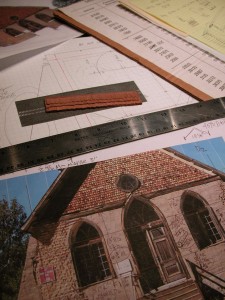
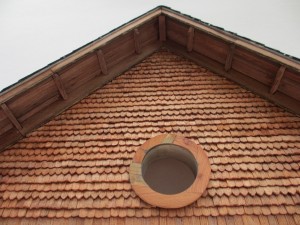
Early in the 1890′s, a regular Methodist minister, a Mr. Ruoff, was assigned to Pinos Altos and Central City. He made his home in Pinos Altos and tried to interest people in building a church there as the population was about 1000 in those days. Under the auspices of the Methodist Extension board, Mr. and Mrs. Frank Bell donated a part of their mining claim for site of a church. The ladies gave box supper socials, and bazaars to raise money and the men promised regular contributions from their wages. Mrs. Phoebe Hearst of the Hearst Interests visited the property at this time and became interested in the project of a church, but would not give a donation ($300) until the church board agreed to have a reading room for the miners in connection with the church, she saying she would supply the reading materials and pay the expenses. This was agreed upon, but because some of the miners were of different denominations and felt uneasy about reading in a church they did not belong to, a curtain was made and placed between the reading room and that used for church services. After this slight alteration, the reading room became a very popular place. The church building was finished and dedicated on May 18, 1898, with the Rev. Ruoff, who was retiring, and the new pastor conducting the services. As the population of Pinos Altos dwindled so did the size of the congregation so there was no regular minister and visiting ministers of the Methodist, Episcopal, and Presbyterian churches came up for services on different Sundays. As the congregation dropped off even more and there was no longer a need for ministers to come to Pinos Altos, the church building was used mainly for social entertainments, lectures, etc. With the coming of the family car, the local residents found it easier to drive to Silver City even for these activities and the population was not great enough to support the upkeep of the building.